Marie Antoinette and the Nipple
When we think of fashion from the past, we often imagine women wearing long skirts, corsets, and high-necked blouses, with an emphasis on modesty. However, this wasn’t always the case—especially in 18th-century France, during the reign of Marie Antoinette. In her royal court, fashion was a way to make a statement, and often, it was more about showing off rather than covering up. Sometimes, this meant showing off much more than we might be comfortable with today.
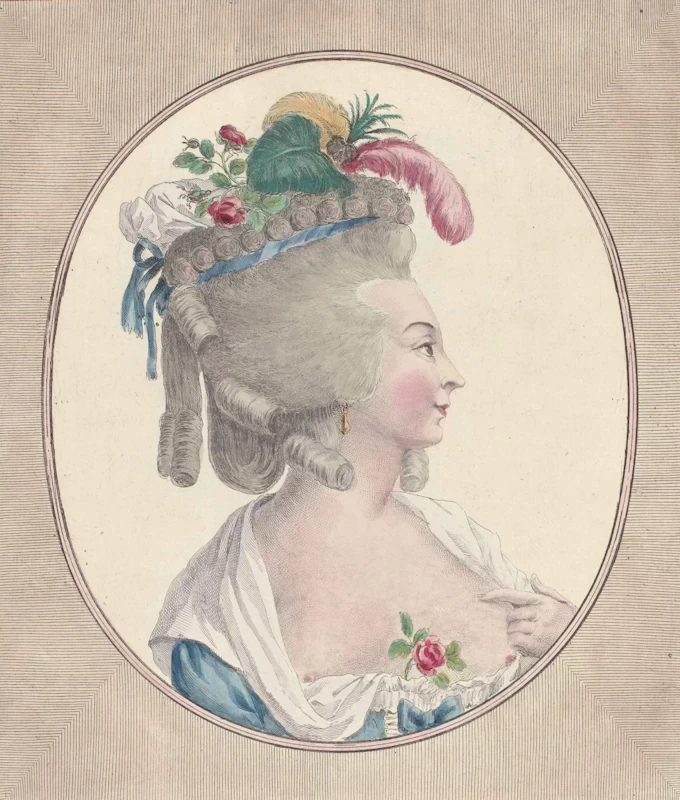
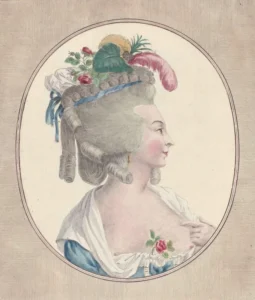
Décolleté: Fashion as a Statement
In Marie Antoinette’s time, low-cut bodices and revealing necklines were the height of fashion. Although it might seem shocking by today’s standards, exposing the breast was not only common but expected at royal balls. This was especially true for the elite women in Marie Antoinette’s court, who set the trends others would follow. Women from lower classes might have had to dress more modestly, but the court of Versailles was the epicenter of fashion, and every aspect of a woman’s appearance—from the neckline of her dress to the height of her hair—was an expression of her wealth, power, and social status.
The term “décolleté” refers to a plunging neckline that exposed the chest, and was an important social signal. A woman with a visible décolleté was showing that she was part of the wealthy elite, and revealing a hint of nipple or areola was not seen as inappropriate or shameful, but as a sign of beauty, youth, and vitality. Hence women at court competed to see who could display the most cleavage.
If a woman didn’t reveal some cleavage, it was often assumed that she was hiding something—perhaps her age or even her purity. For girls, as young as 15, displaying the décolleté was a rite of passage into adulthood and was seen as a symbol of entering the realm of mature, desirable women. Showing cleavage at a royal event or a ball signified you have transitioned into womanhood and were ready to participate in the grown-up world.
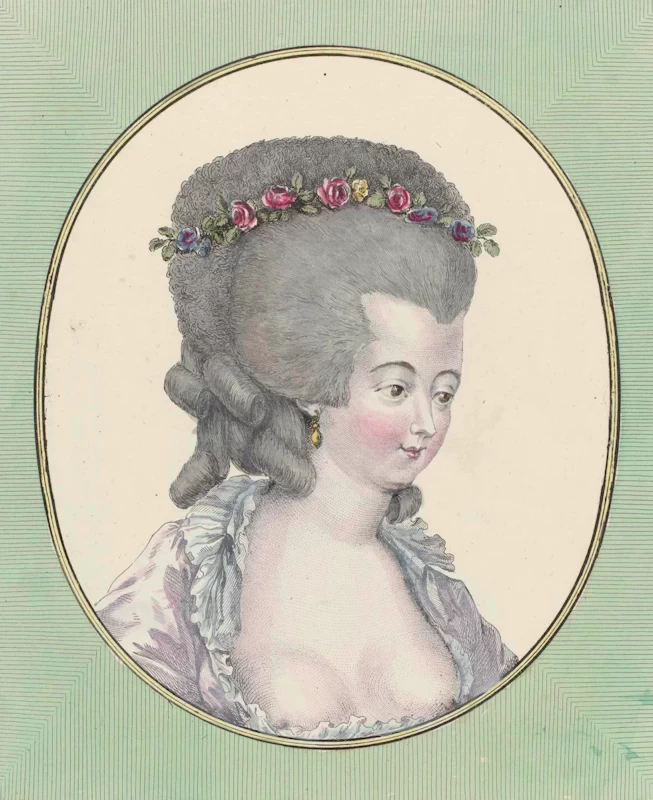
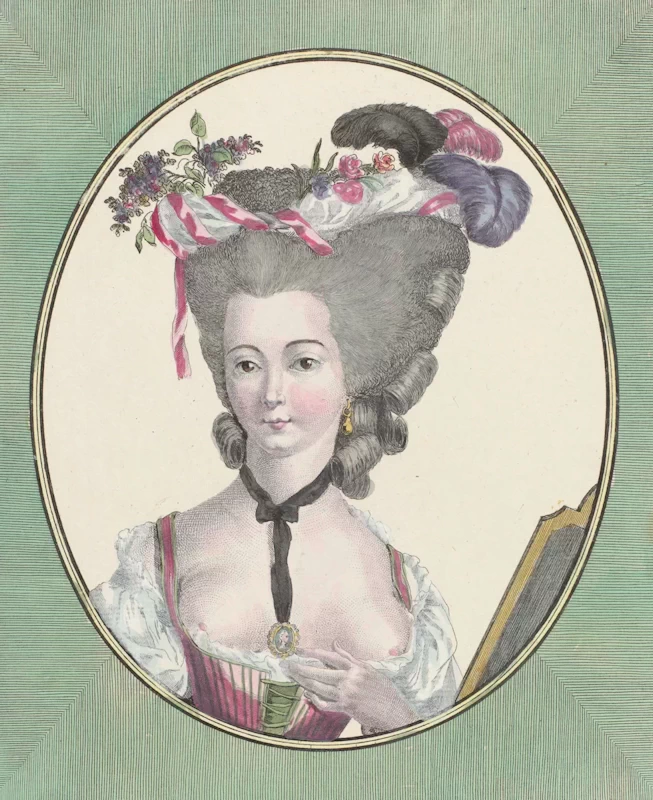
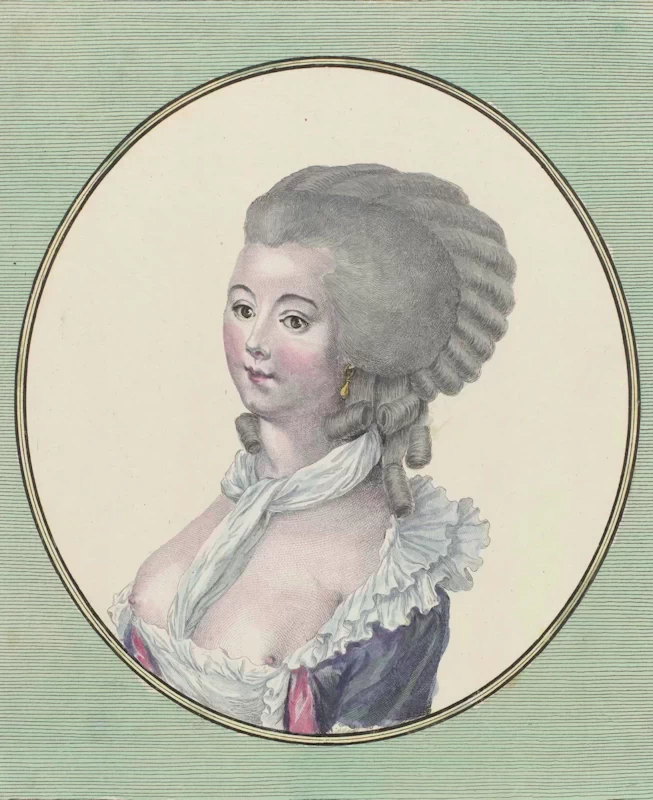
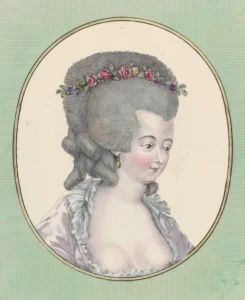
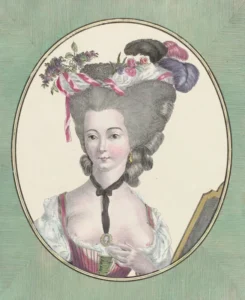
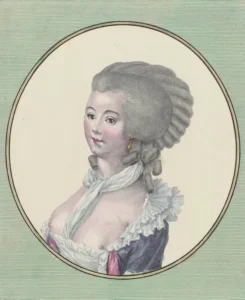
The Fashion Solutions for Extreme Necklines
The garments of the 18th century were not like today’s dresses with built-in structure or stretch fabrics; instead, they required careful construction to maintain their shape. The revealing necklines needed creative solutions to keep everything in place. Fashion designers of the time were pushed to innovate in ways that we might take for granted today. Early versions of what we now recognize as push-up bras were developed. These early undergarments used padding, stiff fabrics, and intricate boning to provide support, lift, and structure for the breasts. Without these designs, the very low necklines were wardrobe malfunctions waiting to happen.
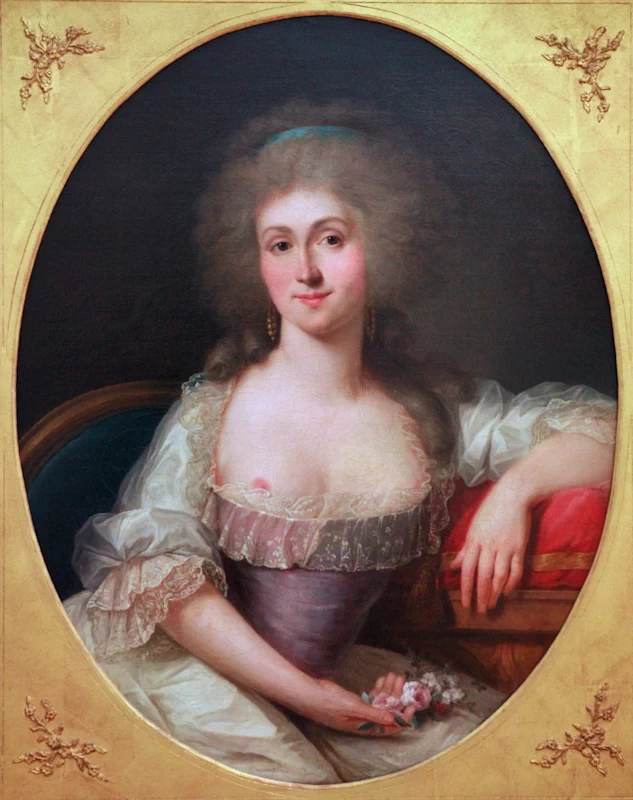
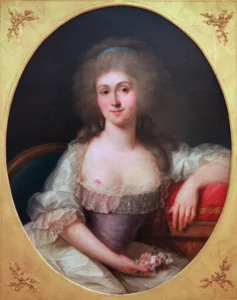
The Total Look: Fashion Beyond the Décolleté
While the décolleté was certainly the most provocative aspect of 18th-century fashion, it wasn’t the only statement women made with their clothing. The fashion of the time was a complete spectacle. Women at court wore towering powdered wigs, some reaching heights of up to three feet. These extravagant hairpieces were often decorated with ribbons, feathers, and even small decorative objects like miniature ships or gardens. These bold, artistic creations were meant to attract attention and showcase the wearer’s wealth and taste.
In addition to their elaborate wigs, women’s faces were covered with thick white powder, creating a pale complexion that was considered fashionable and a symbol of high status. Blush was applied to their cheeks, and beauty marks were added, often in the form of small black dots, to enhance their beauty. These glow ups were a way of signaling wealth, as only those with the time and resources could afford to spend hours getting dressed and made up in such a detailed way.
This focus on elaborate beauty wasn’t just limited to women. Men at court also dressed in extravagant, ornate clothing. They wore richly decorated coats, lace cuffs, and stockings, all in bright colors and intricate patterns. These trends reflected the growing divide between the aristocracy and the common people. Fashion had become a language in itself, where the clothes you wore could tell others everything they needed to know about your social standing.
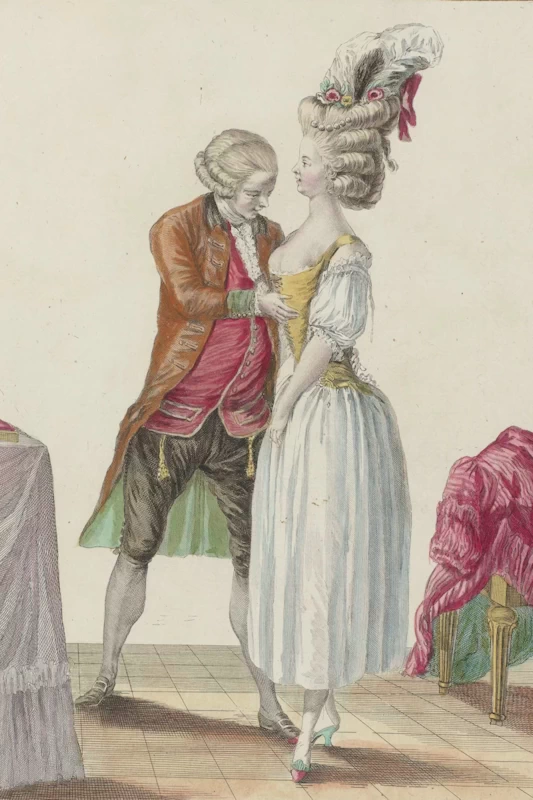
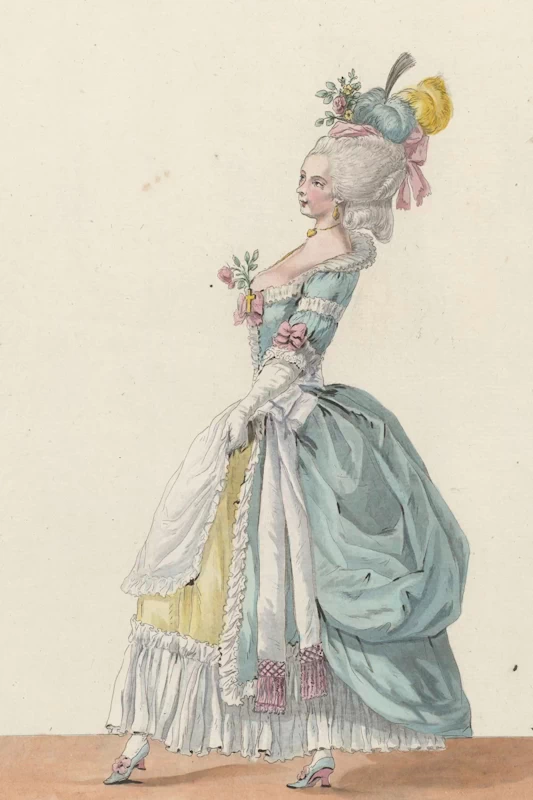

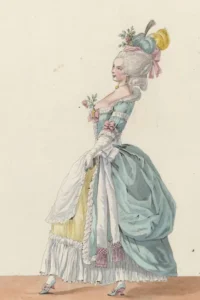
Censorship and Changing Norms in Art
Over the centuries Western art has gone through periods of censorship, where artists were pressured to conform to the changing social and moral standards of their time. Although low-cut dresses and exposed breasts were commonplace in the 18th century, you won’t always see this reflected in art from that era. This is because in later periods, artists were instructed to cover up nudity in past artworks to make them acceptable to more conservative audiences. They often painted drapery to “hide” the offending body parts, a practice, known as “fig-leafing”. This was intended to preserve modesty, even if it meant changing the artist’s original intention and effectively altering history itself to meet the demands of social decorum.
As a result, many of the depictions of 18th-century fashion we see today don’t fully capture how revealing the clothing actually was. If a modern TV show or movie were to accurately depict the level of exposure that was fashionable in Marie Antoinette’s era, it could cause a major uproar. This shows just how much societal norms around modesty and exposure have evolved over the centuries.
The Shift to Simpler Styles
Eventually, the extravagant fashion of the 18th century came to an end, partly due to the sweeping political changes of the French Revolution. The Revolution, which focused on ideals of equality and liberty, made the lavish clothing of the aristocracy seem out of touch with the new values of the time. The once-popular high-fashion styles of Versailles, with their opulence and excess, became symbols of a fallen monarchy. As the middle class gained power and influence, the trends shifted towards simpler, more practical clothing. Dresses made from plain muslin fabrics, with unpowdered hair and minimal jewelry, became the new trend. Fashion was now less about flaunting wealth and more about fitting in with the political ideals of the time. The rise of simpler, more accessible styles reflected a society moving away from the excesses of the old regime and embracing a more democratic ideal.
The Industrial Revolution played a role in these changes as well. Advances in textile production made clothes more affordable and accessible to a broader range of people. As clothing became cheaper and easier to produce, it allowed people from all walks of life to participate in the fashion trends of the time. Fashion was no longer something that only the rich could enjoy—it became a way for everyone to express their individual style.
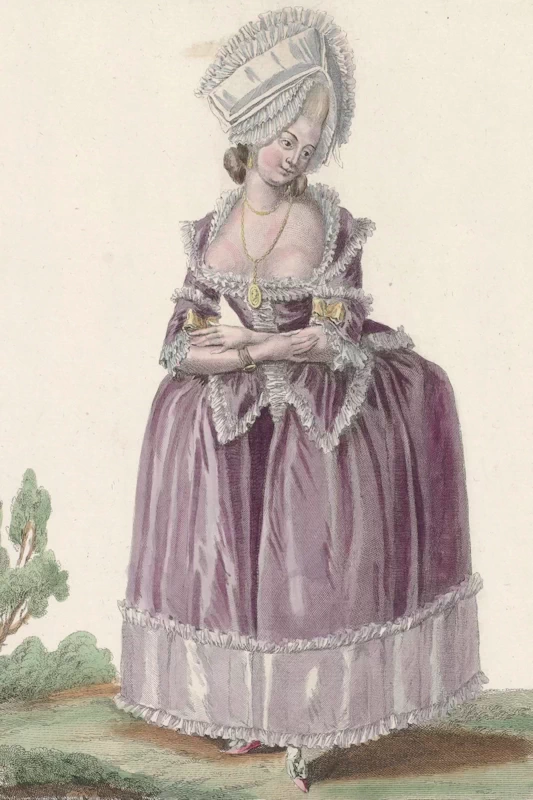
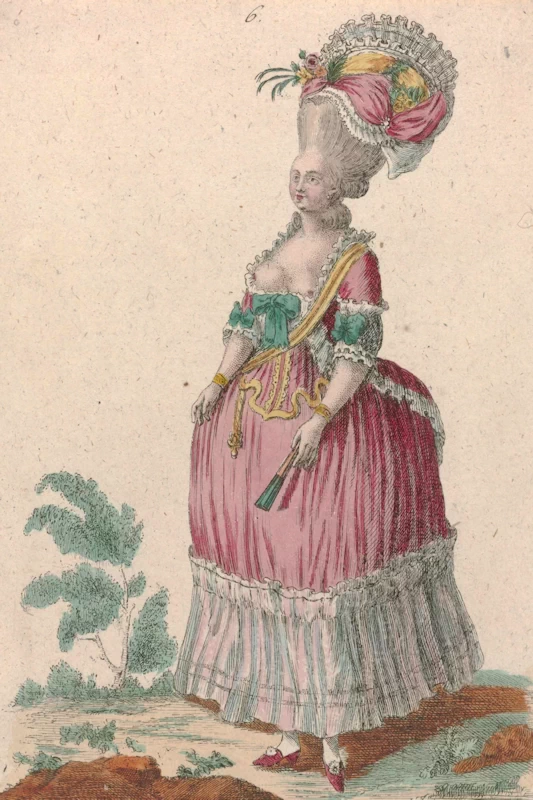
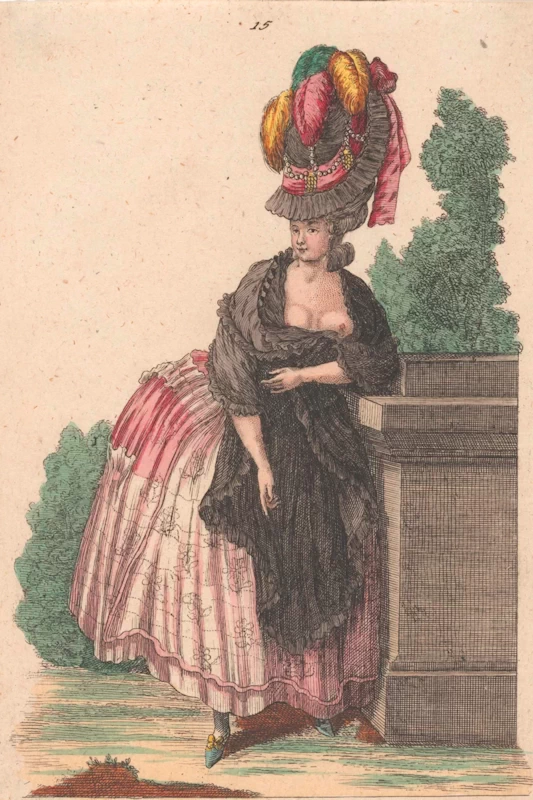
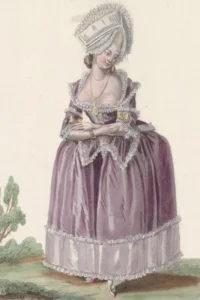
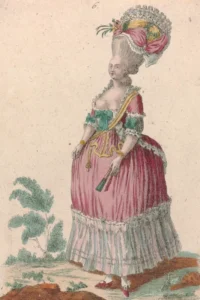
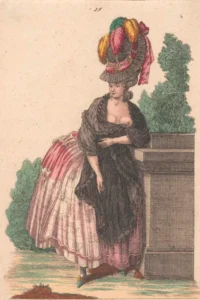
Marie Antoinette’s Lasting Influence on Fashion
Marie Antoinette, with her love for luxury and extravagant taste, was one of the most influential fashion icons of her time. She collaborated with designers like Rose Bertin to create some of the most talked-about looks at the court of Versailles. Even after her death, Marie Antoinette’s style continued to inspire fashion for many years. Her obsession with extravagant clothing and luxury became legendary, and she became the symbol of royal excess.
One of her most famous fashion moments was when she wore a simple “peasant dress” in an attempt to appear more relatable to the French people. Ironically, these dresses were made from luxurious fabrics and crafted by expert designers, so they were still incredibly expensive and extravagant. Even in her attempt at simplicity, Marie Antoinette’s fashion was a statement of her wealth and status.
The Legacy of 18th-Century Fashion
The changes in fashion from Marie Antoinette’s era reflect the political, cultural, and social shifts of the time. Looking back at the fashion of her court allows us to see how clothing is more than just fabric and design—it’s a way to express who we are, what we value, and how we view the world. Fashion is an ongoing conversation that reflects the times we live in, and every new trend is part of that conversation. So, the next time you see a new fashion trend that seems unusual or even outrageous, remember that it’s all part of an ever-changing dialogue about style, identity, and society.
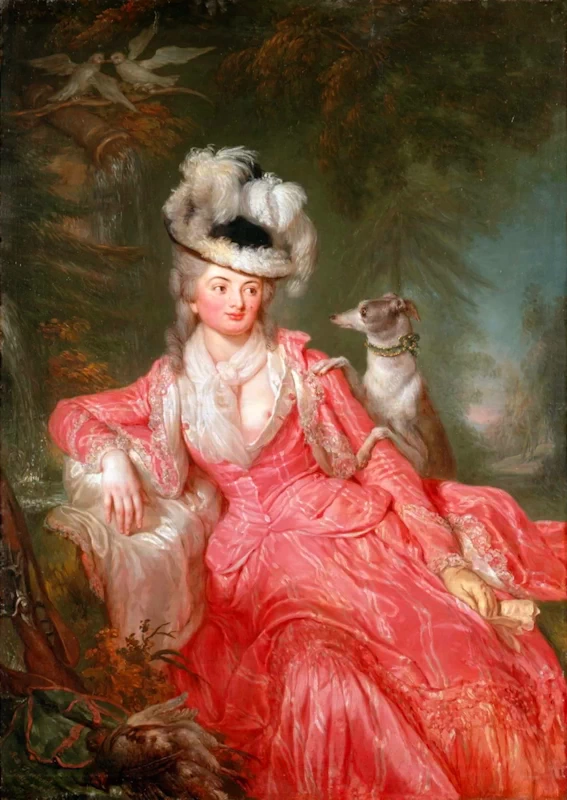
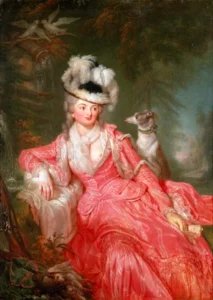
Bonus Trivia
There is a legend that coupe glasses, which today are used for various mixed drinks, were modeled from Marie Antoinette’s (left) breast. It isn’t true however. The coupe glass was designed a hundred years before to serve champagne and sparkling wines.



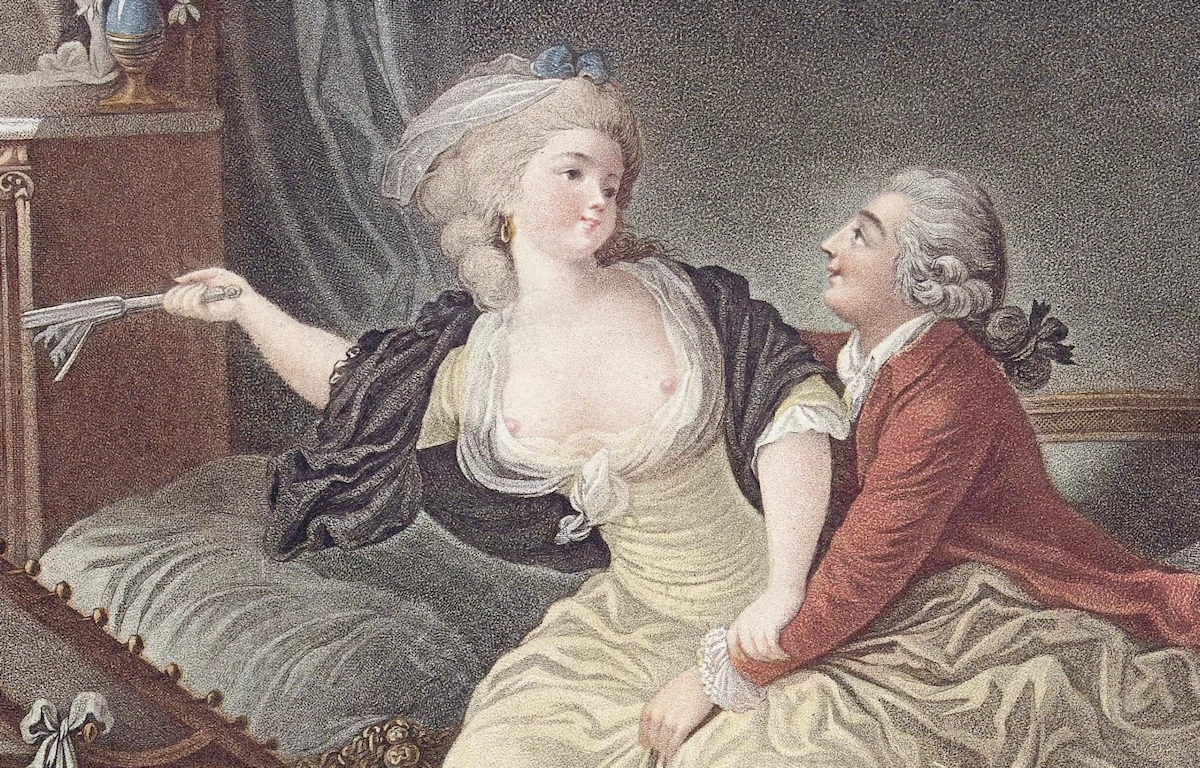

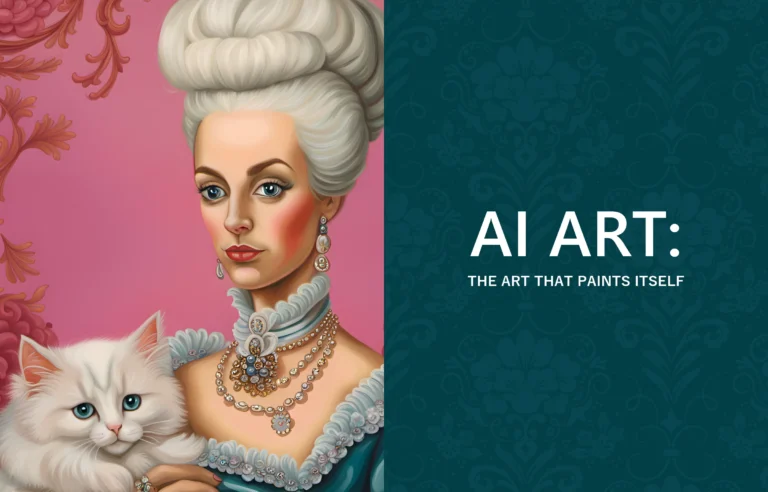
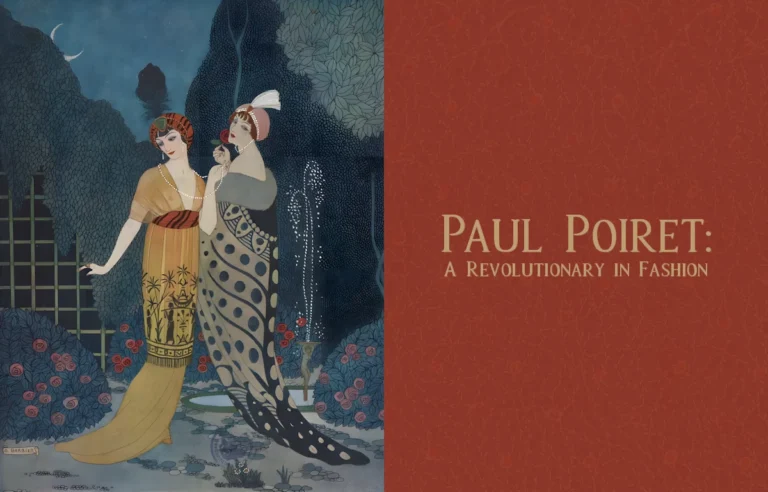

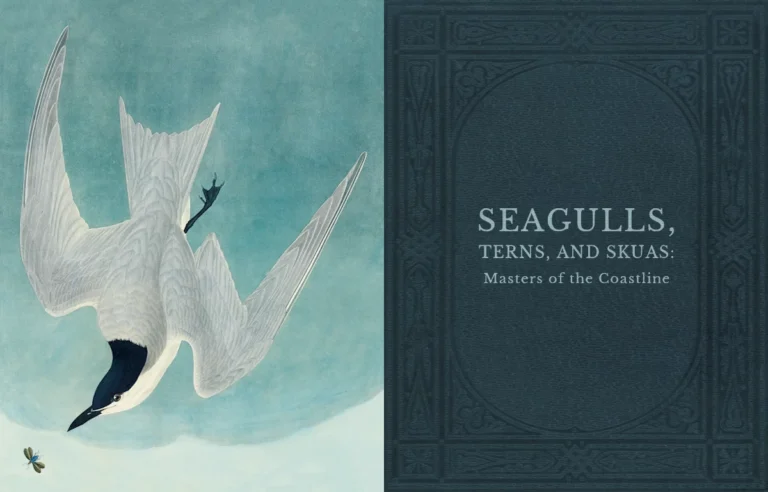

One Comment
Comments are closed.